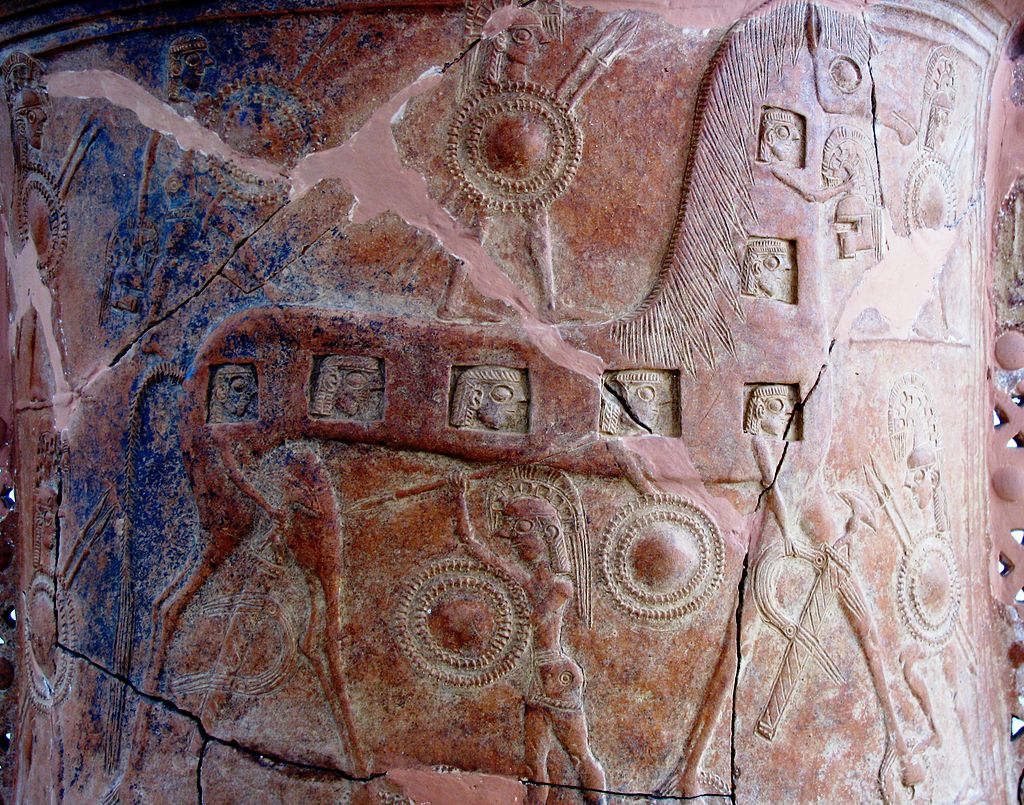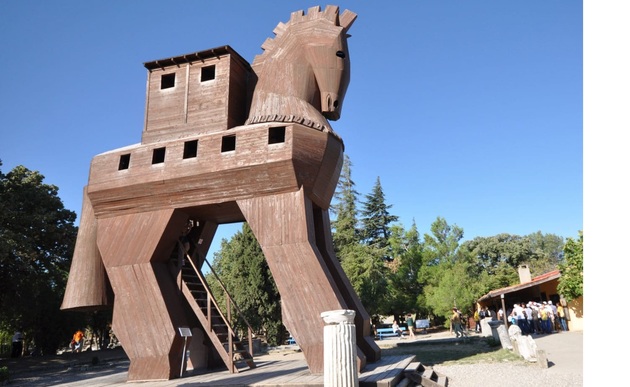Turkish archaeologists claim they have found what they believe are pieces of the Trojan Horse. According to a report by newsit.gr, Turkish archaeologists excavating the site of the historical city of Troy on the hills of Hisarlik have unearthed a large wooden structure. Historians and archaeologists think what they have discovered are remains of the legendary Trojan Horse.
Greek Reporter states that the excavations brought to light dozens of fir planks and beams up to 15 meters (49 feet) long. The remnants were assembled in a strange form, that led the experts to suspect they belong to the Trojan Horse. The wooden structure was inside the walls of the ancient city of Troy.
The Trojan Horse is considered by most to have been a mythical structure. The horse is commonly associated with Homer’s epic poems the Iliad and the Odyssey. The classic epic poems tell the story of the Trojan War and Odysseus’ long journey back to Ithaca, but curiously enough, they do not feature the iconic wooden horse. In fact, the Iliad closes out right before the war is over.
The story of the Trojan Horse comes in at the very end of the war, as it is used as a strategy to seize Troy and win the war completely. The story of the Trojan Horse is featured most prominently in the Aeneid by Virgil, a Latin text from the time of Augustus’ rule in Rome. Historians suggest that the ancient writer was using the image of the horse as an analogy for a war machine, or even perhaps a natural disaster.
The structure found fits the description by Virgil, Augustus and Quintus Smyrnaeus. So archaeologists have started to consider that the discovery is indeed the remains of the subterfuge Greeks used to conquer ancient Troy.
Another discovery that supports the archaeologists’ claims is a damaged bronze plate with the inscription “For their return home, the Greeks dedicate this offering to Athena.” Quintus Smyrnaeus refers to the particular plate in his epic poem “Posthomerica.” The plate was also found on the site.

Can the pieces of the Trojan Horse be scientifically verified?
The two archaeologists leading the excavation, Boston University professors Christine Morris and Chris Wilson, say that they have a “high level of confidence” that the structure is indeed linked to the legendary horse. They say that all the tests performed up to now have only confirmed their theory.
“The carbon dating tests and other analysis have all suggested that the wooden pieces and other artifacts date from the 12th or 11th centuries B.C.,” says Professor Morris. “This matches the dates cited for the Trojan War, by many ancient historians like Eratosthenes or Proclus. The assembly of the work also matches the description made by many sources. I don’t want to sound overconfident, but I’m pretty certain that we found the real thing!”










